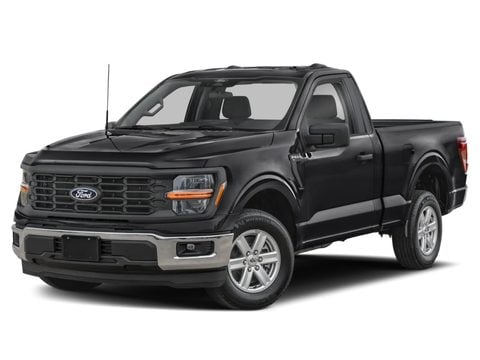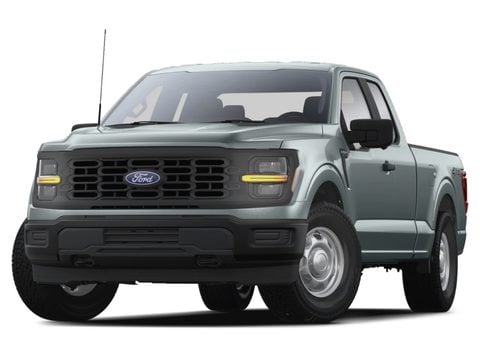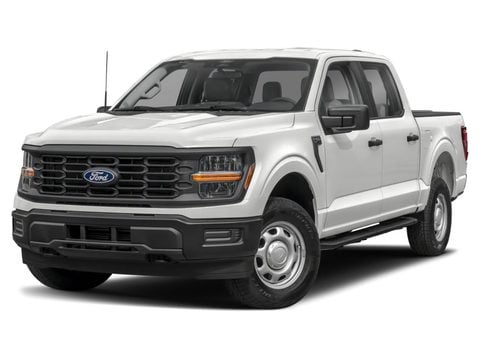Pickup trucks have come a long way from their humble, utilitarian beginning. Today’s trucks offer a wide range of trims, sizes, engine options and features — with some models more rugged and work-focused and others more family-friendly.
Whether you’re buying your first truck or upgrading, this guide can help you determine what type of pickup truck will work best for you.
Understanding the different truck segments can help you determine the type of truck most suitable for you.
Full-size pickup trucks
Also called large trucks, this segment is the most popular in the U.S. They’re built for towing heavier loads, such as campers, trailers, boats or work equipment. They’re often used for work, but they also include luxury trims that can rival high-end SUVs.
Mid-size pickup trucks
Slightly larger than compact trucks, mid-size trucks provide a balance of capability and comfort. They can tow moderate loads and offer off-road-focused trims without being too cumbersome for everyday use.
-
Notable advantage: When compared to a full-size truck, mid-size trucks can be easier to maneuver and park.
-
Examples: The Toyota Tacoma, Ford Ranger and Chevrolet Colorado.
Compact pickup trucks
This is the smallest type of truck on the market, and there are relatively few models available. Compact trucks have a unibody construction making them more like a crossover SUV with a bed for hauling. Drivers who want a vehicle that handles more like a car, as well as more hauling space without the size of a larger truck, may find compact trucks to be a good fit.
-
Notable advantage: They’re the least expensive truck type and offer excellent fuel efficiency.
-
Examples: The Ford Maverick and Hyundai Santa Cruz.
Light duty vs. heavy duty trucks: What’s the difference?
In addition to segments, pickup trucks have classifications of light duty and heavy duty based on the gross vehicle weight rating (GVWR). The GVWR is the maximum weight a vehicle can safely carry — including its passengers, cargo and fuel — as specified by the manufacturer. According to the Environmental Protection Agency, trucks with a GVWR less than 8,500 pounds are considered light duty, and trucks with a GVWR more than 8,500 pounds are heavy duty.
Light duty vs. heavy duty trucks at a glance
|
Personal or light commercial. |
||
|
||
|
Light-duty trucks, such as the Ford F-150, are popular for personal and light commercial use. Because of their smaller size and weight, this truck type tends to be more fuel efficient and have a lower starting price. They’re easier to park and drive, and they usually have more than enough ability to pull a small boat or camper. For example, the light-duty, full-size Chevrolet Silverado 1500 base trim can tow up to 9,500 pounds, with higher trim levels going up to 13,300 pounds when properly equipped.
Heavy-duty trucks have higher towing and hauling capacities, making them ideal for commercial use, such as transporting heavy construction materials and equipment. For example, the heavy-duty, full-size Ford F-350 can tow up to 30,000 pounds. Heavy-duty trucks often have large diesel engines, upgraded suspension systems and a more powerful transmission. This truck type also has a higher price tag, are less fuel efficient and can be more difficult to drive. If you won’t have a need to tow 30,000 pounds, a light-duty truck might be a better option.
What to know about cab types and bed configurations
A truck’s cabin or cab is where the driver and passengers ride, and the open area behind the cab is the bed. A key part of truck shopping is choosing the right type of cab and bed combination, because there are many.
Truck manufacturers use their own terminology to describe cab configurations, but pickup trucks basically come with either two or four doors and with or without back seats. Manufacturer names aside, you’ll find these common types of cabs based on number of doors and seating capacity.
Regular or standard cab
Regular or standard cab trucks have two doors with one row of seating. The front section is limited on space, so there may be more room in the bed.

Example of a standard cab (this one is a Ford F-150 Regular Cab).
Extended cab
Extended cab trucks have four doors with two rows of seats. The second row is usually smaller with less legroom than in a crew cab. Also, the front doors are full-size; the rear doors are smaller and rear-hinged.

Example of an extended cab truck (this one is a Ford F-150 SuperCab).
Crew cab
Crew cab trucks have four full-size doors and two rows of seats. Crew cabs can seat four or five adults — making them ideal for families or work crews. They provide more storage space, but you might sacrifice some truck bed length.

Example of a crew cab truck (this one is a Ford F-150 SuperCrew).
If you want a specific type of cab configuration, you might find you are more limited on trim levels and bed lengths.
Truck bed sizes
There are three types of truck beds.
-
Short beds: Around five feet, eight inches long. Short-bed trucks are less expensive and can be easier to drive in tight spaces. They may also have more cab space.
-
Standard beds: About six feet, five inches long. Trucks with standard beds provide a middle-ground, with space for hauling things such as furniture and a shorter length to make maneuvering easier.
-
Long beds: Up to eight feet long. Long-bed trucks offer the most cargo room and are popular for hauling and work-related tasks.
🤓Nerdy Tip
When deciding on your cab and bed needs, consider how much you’ll actually use the bed for cargo versus how often you’ll carry passengers.
More choices to make when buying a pickup truck
Today’s truck shoppers have more options than ever to choose from. Here are additional factors to consider when deciding on the right truck type for you.
☐ Towing capacity and payload. Towing capacity is the maximum amount of weight your truck can pull. Payload is the amount of weight your truck can carry in the bed and cabin combined, including you and your passengers. Think about what you intend to tow or haul and how many passengers you will regularly carry. Check towing and payload specs for truck models you’re considering, but keep in mind these vary based on factors such as the engine type, drivetrain and optional equipment.
☐ Powertrain and engine. You’ll find gas-powered, diesel-powered, electric, hybrid and plug-in hybrid models. Gas engines are still the most common, but hybrid and electric choices are expanding. Diesel trucks offer fuel efficiency and more torque, making them ideal for heavy towing. Engine configurations include four-, six- and eight-cylinder — some with turbocharging to boost power and efficiency.
☐ Fuel economy. At one time, it was common for trucks to have mpg ratings in the teens, but that has changed. Today, many models can achieve 20 mpg or more for city/highway driving combined. The Ford Maverick Hybrid has an EPA-estimated combined mpg of 37. So, it makes sense to compare fuel economy ratings for truck models.
☐ Drivetrain. Most trucks come with standard rear-wheel drive (RWD), also called 4×2 trucks. They have a lower cost, better fuel economy and possibly a higher towing and payload capacity due to their lighter weight. Four-wheel drive (4WD) and all-wheel drive (AWD) options are also available. Trucks with 4WD, also called 4×4, cost more and aren’t as fuel-efficient, but they usually handle better for off-roading and bad weather.
☐ Off-road packages. Some trucks come with features and equipment that improve off-road capabilities, such as all-terrain tires, enhanced suspension and skid plates to protect the truck’s underside. These cost extra, so determine whether your plans to go off pavement justify this expense.
☐ Interior and tech. Trucks are built for towing, hauling and handling rougher terrain — but they’re also increasingly refined, with comfortable cabins and tech features. Will you want a no-frills truck, or features like Apple CarPlay/Android Auto, heated/ventilated seats or a premium audio system?
How much does a pickup truck really cost?
Base trim pickup trucks can be budget-friendly, but higher trims and options can push the cost significantly higher, resulting in a wide pricing range. Here are estimated low and high prices to expect for a gas pickup truck.
-
Compact trucks: $26,000 to $55,000.
-
Mid-size trucks: $33,000 to $60,000.
-
Full-size trucks: $38,000 to $80,000.
-
Heavy-duty trucks: $45,000 plus.
High-performance off-road trucks, fully-equipped work trucks and luxury models may cost more than $100,000.
It’s tempting to buy the biggest, most powerful truck on the lot, but think carefully about what you actually need. Overbuying can result in spending thousands of dollars more for features and capabilities you will never use.
Budgeting for a pickup truck
Because trucks can come with a hefty price tag, it’s a good idea to have a maximum price in mind before you start shopping.
-
Factor in not just the MSRP or sticker price but also upfront costs like sales tax and destination fees. Use online buying guides like Kelley Blue Book and Edmunds to ensure you don’t pay more than a particular model is worth.
-
If you’ll be financing, shop lenders and compare interest rates. An auto loan calculator shows you an estimated monthly payment amount and total loan cost for different interest rate and term scenarios.
-
Take time to get a preapproved auto loan, so you have an idea of the rate and maximum loan amount you can qualify for. If you’re buying from a dealership, ask if they can beat your preapproved rate.
Finding the right type of pickup truck for you
A good first step in finding the right truck is to create a list of the ways you plan to use a truck and what features matter to you. Then identify models and trims that are the closest match. If possible, test drive them, especially if you aren’t accustomed to driving a truck.
Whether you intend to haul lumber, tow a boat trailer, ascend mountains or just drive the kids around town, there’s a pickup truck to suit your needs. It may take some effort to find it, because of the overwhelming number of variations available. But, having so many options isn’t a bad thing. It just gives you more opportunities to find a pickup truck that’s a perfect match.

